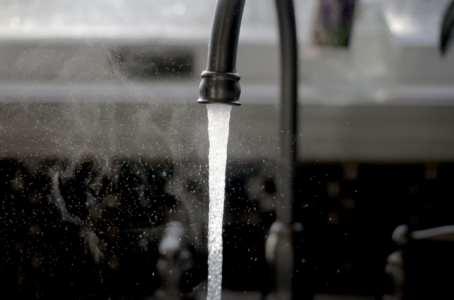5 easy ways to boost water pressure without a plumber
- Replies 0
Low water pressure doesn’t just mess with your morning shower—it can also affect your hose, dishwasher, and washing machine.
If your pressure is weak, don’t panic or call a plumber just yet.
A few targeted checks and tweaks might be all you need to get things flowing right.
Here’s how to troubleshoot it yourself and fix the problem before spending a dime.
Start with a simple pressure test to see what you're working with.
You can get a water pressure gauge for a few bucks at the hardware store and attach it to a hose spigot. If the reading is under 40 psi, your pressure is officially on the low side.
“Normal” home water pressure falls between 40 and 60 psi, so anything below that may need intervention.
Next, check your main water valve to make sure it’s fully open. A partially closed valve is one of the most common—and easily overlooked—reasons for low water pressure.
If your home has two valves (one inside and one outside), ensure both are open all the way.
Also, take a look at the individual shutoff valves under sinks and behind toilets if the problem seems localized.
Leaks or clogs could also be the culprit. Even a small crack in a supply line can cut your pressure drastically.
If the pipes in your house are older, corrosion or buildup could be clogging things up from the inside.
Also read: Leaving for vacation? Don’t skip these 4 crucial steps to keep your home safe from burglars!
If your plumbing is newer, a recent install could’ve introduced a blockage—check the area around new connections.
If just one faucet or fixture has low pressure, clean the aerators and filters. Unscrew the aerator at the tip of your faucet and rinse away sediment or gunk buildup.
Shower Heads often have removable screens, too—soak them in vinegar if they’re clogged. You’d be surprised how much better your flow can get after a 10-minute scrub.
Still low? Try adjusting your home’s pressure-reducing valve (PRV), usually located near the main water line.
A quick turn of the PRV screw can nudge your water pressure up a few psi—but be careful not to overdo it.
These valves exist to prevent damage to pipes and appliances from excessive pressure.
If turning it doesn’t help at all, the PRV might be faulty and need replacing.
If you've ruled out common culprits like clogged pipes, leaks, or closed valves and your water pressure is still frustratingly low, it may be time to consider installing a water pressure booster.
Also read: Unlocking better health from home: What to know about at-home tests
This system, which includes a pump and pressure tank, can significantly improve flow throughout your home.
While some minor pressure issues can be fixed with DIY checks, sudden drops or persistent problems are best handled by a professional.
A licensed plumber can diagnose the exact cause and recommend the most effective solution—whether it’s repairing a hidden leak or upgrading your pressure system entirely.
Read next: Experts reveal: Ignore these 6 home maintenance tasks and you’ll regret it!

Have you tackled a low water pressure issue without calling in the pros? Did any of these tricks work for you — or did you have to go the plumber route anyway? Share your experiences in the comments. Someone else might benefit from what you figured out.
If your pressure is weak, don’t panic or call a plumber just yet.
A few targeted checks and tweaks might be all you need to get things flowing right.
Here’s how to troubleshoot it yourself and fix the problem before spending a dime.
Start with a simple pressure test to see what you're working with.
You can get a water pressure gauge for a few bucks at the hardware store and attach it to a hose spigot. If the reading is under 40 psi, your pressure is officially on the low side.
“Normal” home water pressure falls between 40 and 60 psi, so anything below that may need intervention.
Next, check your main water valve to make sure it’s fully open. A partially closed valve is one of the most common—and easily overlooked—reasons for low water pressure.
If your home has two valves (one inside and one outside), ensure both are open all the way.
Also, take a look at the individual shutoff valves under sinks and behind toilets if the problem seems localized.
Leaks or clogs could also be the culprit. Even a small crack in a supply line can cut your pressure drastically.
If the pipes in your house are older, corrosion or buildup could be clogging things up from the inside.
Also read: Leaving for vacation? Don’t skip these 4 crucial steps to keep your home safe from burglars!
If your plumbing is newer, a recent install could’ve introduced a blockage—check the area around new connections.
If just one faucet or fixture has low pressure, clean the aerators and filters. Unscrew the aerator at the tip of your faucet and rinse away sediment or gunk buildup.
Shower Heads often have removable screens, too—soak them in vinegar if they’re clogged. You’d be surprised how much better your flow can get after a 10-minute scrub.
Still low? Try adjusting your home’s pressure-reducing valve (PRV), usually located near the main water line.
A quick turn of the PRV screw can nudge your water pressure up a few psi—but be careful not to overdo it.
These valves exist to prevent damage to pipes and appliances from excessive pressure.
If turning it doesn’t help at all, the PRV might be faulty and need replacing.
If you've ruled out common culprits like clogged pipes, leaks, or closed valves and your water pressure is still frustratingly low, it may be time to consider installing a water pressure booster.
Also read: Unlocking better health from home: What to know about at-home tests
This system, which includes a pump and pressure tank, can significantly improve flow throughout your home.
While some minor pressure issues can be fixed with DIY checks, sudden drops or persistent problems are best handled by a professional.
A licensed plumber can diagnose the exact cause and recommend the most effective solution—whether it’s repairing a hidden leak or upgrading your pressure system entirely.
Read next: Experts reveal: Ignore these 6 home maintenance tasks and you’ll regret it!
Key Takeaways
- Most home water pressure issues stem from leaks, clogs, or partially closed valves.
- Normal pressure falls between 40–60 psi, which you can measure with a hose gauge.
- Cleaning aerators and adjusting your PRV are easy DIY fixes.
- Only call a plumber if there's no clear source or your pressure suddenly drops.
Last edited:







